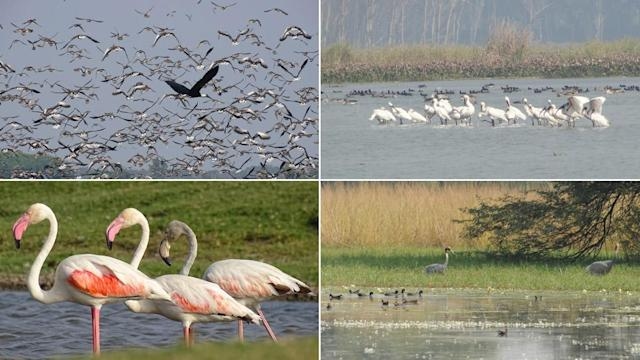New Delhi: Four more wetlands in India have been recognised as wetlands of global importance under the Ramsar Convention. The sites are Thol and Wadhwana in Gujarat and Sultanpur and Bhindawas in Haryana.
“Happy to inform that four more Indian wetlands have got Ramsar recognition as wetlands of international importance, ” said Union Environment Minister, Bhupender Yadav in a tweet.
Yadav said that it is Prime Minister Narendra Modi’s concern for the environment which has led to overall improvement in how India cares for its wetlands.
With the addition of four sites, the number of Ramsar sites in India stands at 46 and the surface area covered by these sites is now 1,083,322 hectares.
While Haryana gets its first Ramsar sites, Gujarat gets three more after Nalsarovar which was declared in 2012.
Named after the city of Ramsar in Iran, where the convention was signed in 1971, the Ramsar Convention is an international treaty for the conservation and sustainable use of wetlands.
The aim of the Ramsar list is to develop and maintain an international network of wetlands which are important for the conservation of global biological diversity and for sustaining human life through the maintenance of their ecosystem components, processes and benefits.
Wetlands provide a wide range of important resources and ecosystem services such as food, water, fibre, groundwater recharge, water purification, flood moderation, erosion control and climate regulation.
They are, in fact, are a major source of water and our main supply of freshwater comes from an array of wetlands which help soak rainfall and recharge groundwater.
Bhindawas Wildlife Sanctuary, the largest wetland in Haryana is a human-made freshwater wetland. Over 250 bird species use the sanctuary throughout the year as a resting and roosting site. The site supports more than ten globally threatened species including the endangered Egyptian Vulture, Steppe Eagle, Pallas’s Fish Eagle, and Black-bellied Tern.
Sultanpur National Park from Haryana supports more than 220 species of resident, winter migratory and local migratory waterbirds at critical stages of their life cycles. More than ten of these are globally threatened, including the critically endangered sociable lapwing, and the endangered Egyptian Vulture, Saker Falcon, Pallas’s Fish Eagle and Black-bellied Tern.
Thol Lake Wildlife Sanctuary from Gujarat lies on the Central Asian Flyway and more than 320 bird species can be found here. The wetland supports more 30 threatened waterbird species, such as the critically endangered White-rumped Vulture and Sociable Lapwing, and the vulnerable Sarus Crane, Common Pochard and Lesser White-fronted Goose.
Wadhvana Wetland from Gujarat is internationally important for its birdlife as it provides wintering ground to migratory waterbirds, including over 80 species that migrate on the Central Asian Flyway. They include some threatened or near-threatened species such as the endangered Pallas’s fish-Eagle, the vulnerable Common Pochard, and the near-threatened Dalmatian Pelican, Grey-headed Fish-eagle and Ferruginous Duck.
The Ministry of Environment, Forest & Climate Change would be working closely with the State Wetland Authorities to ensure the wise use of these sites, said the environment ministry.


